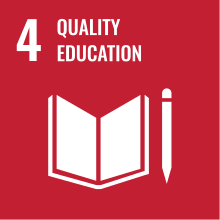Capacity Building


Capacity building (or capacity development) is the process by which individuals and organizations obtain, improve, and retain the skills, knowledge, tools, equipment and other resources needed to do their jobs competently or to a greater capacity (larger scale, larger audience, larger impact, etc). Capacity building and capacity development are often used interchangeably.
Capacity Building is complex. According to Stoll (2009) it encompasses:
- "creating and maintaining the necessary conditions, culture and structures;
- facilitating learning and skill-oriented experiences and opportunities;
- ensuring interrelationships and synergy between all the component parts."[2]
Community capacity building is a conceptual approach to social, behavioral change and leads to infrastructure development. It simultaneously focuses on understanding the obstacles that inhibit people, governments, international organizations and non-governmental organizations (NGOs) from realizing their development goals and enhancing the abilities that will allow them to achieve measurable and sustainable results.
The term community capacity building emerged in the lexicon of international development during the 1990s. Today, "community capacity building" is included in the programs of most international organizations that work in development, such as the World Bank, the United Nations and non-governmental organizations like Oxfam International. Wide use of the term has resulted in controversy over its true meaning.
Community capacity building often refers to strengthening the skills, competencies and abilities of people and communities in small businesses and local grassroots movements so they can achieve their goals and potentially overcome the causes of their exclusion and suffering. Organizational capacity building is used by NGOs & Governments to guide their internal development and activities (see [[w:Capacity_building|Wikipedia][3]).
Learning Tasks
[edit | edit source]- (Open Educational Resources) Analyse the definitions for capacity building!. Explain how Open Educational Resources can be used for capacity building and discuss the relevance of remixing adaption of the learning resources for a specific purpose and the role of OER to accomplish capacity building objectives!
- (Humanitarian Capacity Building) Explain the learning environments provided in Wikiversity to provide tailored capacity building support for member states of United Nations or for remote rural communities without internet access. Adress the last mile problem with capacity building concepts[4]!
- (Leave No One Behind) Analyse the approach of leaving no one behind in the context of United Nations and explain the relevance of Open Educational Resources for capacity building in the context to meet the local and regional requirements and constraints!
- (Scientific Hackathon) Explain how a Scientific Hackathon can be used for capacity building and rapid prototyping for an institution or organisation!
- (Eliminating Poverty) Explain how capacity building is relevant to the elimination of poverty.
See also
[edit | edit source]References
[edit | edit source]- ↑ UN-Guidelines for Use of SDG logo and the 17 SDG icons (2019/05/10) - https://www.un.org/sustainabledevelopment/news/communications-material/
- ↑ Stoll, L. (2009). Capacity building for school improvement or creating capacity for learning? A changing landscape. Journal of Educational Change, 10(2–3), 115–127. https://doi.org/10.1007/s10833-009-9104-3
- ↑ Wikipedia contributors. (2018, May 1). Capacity building. In Wikipedia, The Free Encyclopedia. Retrieved 09:17, June 19, 2018, from https://en.wikipedia.org/w/index.php?title=Capacity_building&oldid=839140613
- ↑ Balcik, B., Beamon, B. M., & Smilowitz, K. (2008). Last mile distribution in humanitarian relief. Journal of Intelligent Transportation Systems, 12(2), 51-63.
